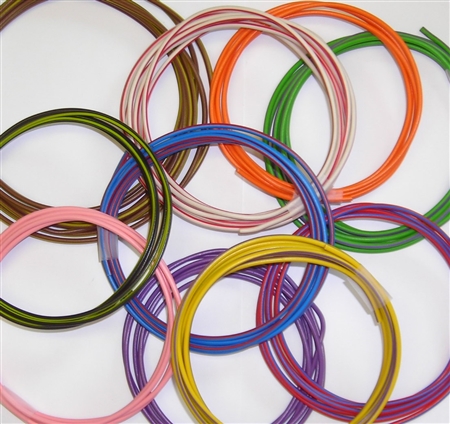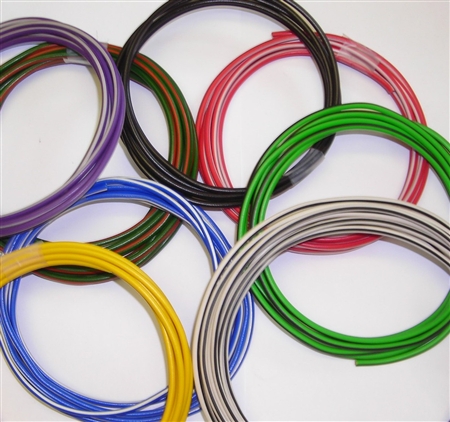Thanks for visiting Access Norton
- Guest view limit reached
- Create a free account (more details)
- Already a member? Click here to login
You are using an out of date browser. It may not display this or other websites correctly.
You should upgrade or use an alternative browser.
You should upgrade or use an alternative browser.
Fuse size
- Thread starter Erol EKH
- Start date
- Status
- Not open for further replies.
olympus
VIP MEMBER
- Joined
- Aug 5, 2017
- Messages
- 1,496
+1. I also have fitted 20amp micro blade fuseI use a 20 amp automotive blade fuse.
Your manual says 35 amp, but be very careful with what this actually means.
View attachment 17923
Bear in mind the difference between the US and UK way that fuses are rated:
The British Standard used rated fuses by the current that would make them blow instantly.
The American (and now international) Standard rates fuses by the amount of current they will carry forever.
With larger fuses, it becomes an issue and you stand a chance of melting your wiring.
For example, our Norton Commando factory workshop manual (written for the Brits with the British Standard in mind) specifies a 35 amp fuse.
View attachment 17924
A 35 amp North American fuse is around double the rating of what a 35 amp British fuse would have been back in the day.
And at this point, all the insulation would be melting off your wires before the fuse blows.
The equivalent automotive blade fuse is 17.5 amp (I upsize to 20 amp, as they are readily available)
The two typical wire sizes we see on our classic bikes, are rated as follows:
13 gauge - 17.5 amps
12 gauge - 27.5 amps
This is working current, not maximum cable capacity.
Always bear this difference in mind when reading the manuals, and replacing the fuses.
How fuses are rated now makes no difference to the way the manuals are worded in the books we've all got on our shelves.
If I bought a glass fuse from my local autostore today, it would be a 20 amp fuse, even though my manual calls for a 35 amp fuse.
- Joined
- Nov 20, 2004
- Messages
- 21,110
The two typical wire sizes we see on our classic bikes, are rated as follows:
13 gauge - 17.5 amps
12 gauge - 27.5 amps
This is working current, not maximum cable capacity.
The vast majority of original wiring used on (12V) British bikes including the Commando was 14/32 SWG (14 strands of 0.0108").
The modern (metric) size is 14/0.30mm, 1.0mm², 8.75amp that replacement harnesses are made of is approximately equivalent to US 18 gauge.
Cable > Standard PVC Cable - Standard Cable - Auto Electric Supplies Website
General purpose low voltage cable for use in automotive and marine applications in temperatures up t...

14 Strand PVC Wire
BritshWiring is your complete source for wiring harnesses, components and accessories for your classic car restoration project.
www.britishwiring.com

28 Strand PVC Wire (14 ga AWG)
BritshWiring is your complete source for wiring harnesses, components and accessories for your classic car restoration project.
www.britishwiring.com
"14 gauge" not widely used on British bikes and "12 gauge" (25.25A!) would be rare if used at all.
Last edited:
olympus
VIP MEMBER
- Joined
- Aug 5, 2017
- Messages
- 1,496
Looks like I need to reduce my fuse amperage...The vast majority of original wiring used on (12V) British bikes including the Commando was 14/32 SWG (14 strands of 0.0108").
The modern (metric) size is 14/0.30mm, 1.0mm², 8.75amp that replacement harnesses are made of is approximately equivalent to US 18 gauge.
Cable > Standard PVC Cable - Standard Cable - Auto Electric Supplies Website
General purpose low voltage cable for use in automotive and marine applications in temperatures up t...www.autoelectricsupplies.co.uk
"14 Strand PVC Wire. Rated for 8 amps. Comparable to 18 Gauge AWG."
14 Strand PVC Wire
BritshWiring is your complete source for wiring harnesses, components and accessories for your classic car restoration project.www.britishwiring.com
"28 Strand PVC Wire. Rated for 17.5 amps. Comparable to 14 Gauge AWG."
28 Strand PVC Wire (14 ga AWG)
BritshWiring is your complete source for wiring harnesses, components and accessories for your classic car restoration project.www.britishwiring.com
"14 gauge" not widely used on British bikes and "12 gauge" (25.25A!) would be rare if used at all.
- Joined
- Jan 2, 2013
- Messages
- 4,255
Engineers use the following formula to determine fuse size:
A is max continuous amps. Then calculate 1.25 x A and if this number is not a standard fuse rating, use the next higher standard rating, but do not exceed 1.75 X A. No one ever told me what to do if there was no standard rating between 1.25 and 1.75
Like kommando, I use 15 A and never had it blow, but then my alternator is on the wimpy side (early Commando 2 wire, whatever wattage that is).
Slick
A is max continuous amps. Then calculate 1.25 x A and if this number is not a standard fuse rating, use the next higher standard rating, but do not exceed 1.75 X A. No one ever told me what to do if there was no standard rating between 1.25 and 1.75
Like kommando, I use 15 A and never had it blow, but then my alternator is on the wimpy side (early Commando 2 wire, whatever wattage that is).
Slick
I seem to remember that the UK and US used to have different standards for fuse ratings. IIRC UK fuses were "quick blow" and US were slow blow. IIRC the standard single fuse in older Brit bike bike harnesses was 35 amps. However the rough modern equivalent for this fuse is 20 amps. Not sure if the attached PDF from the British Car Club of Toronto will open.
Attachments
- Joined
- May 12, 2011
- Messages
- 89
I have an MSWord document I created from postings on this site about fuses for our rides, it says this:
Norton main fuse 20amp
-There is a certain amount of confusion about fuses because the 'old' British system marked fuses referred to them by their blow rating! The blow rating being double the continuous rating and is now outdated by the UK automotive industry for some while.
Use a spade fuse now or Japanese 25mm glass fuse and the fuse value needs to be halved (approx.) from the outdated old British system. The old continuous rating of the '35A' British glass fuses is 17.5A
The nearest equivalent to that normally being used is a 20A.
-It is excess Volts that destroys electronic ignitions, not Amps. Excess Amps destroys wiring. The typical average current (Amps) drawn by your bike's electrical system shouldn't be more than about 10 Amps, although it may increase temporarily if the horn is used, so a 15A may or may not work OK, general consensus is to use a 20A.
- A 180 watt alternator divided by 14.7 volts (typical charging voltage) is 12.25 amps (maximum amps).
Safe engineering practice is to multiply max amps by a factor of 1.25 to obtain the fuse rating.
12.25 x 1.25 = 15.317
A 15 amp fuse may be inadequate, the next rating is 20 amp. Use a 20A.
Norton main fuse 20amp
-There is a certain amount of confusion about fuses because the 'old' British system marked fuses referred to them by their blow rating! The blow rating being double the continuous rating and is now outdated by the UK automotive industry for some while.
Use a spade fuse now or Japanese 25mm glass fuse and the fuse value needs to be halved (approx.) from the outdated old British system. The old continuous rating of the '35A' British glass fuses is 17.5A
The nearest equivalent to that normally being used is a 20A.
-It is excess Volts that destroys electronic ignitions, not Amps. Excess Amps destroys wiring. The typical average current (Amps) drawn by your bike's electrical system shouldn't be more than about 10 Amps, although it may increase temporarily if the horn is used, so a 15A may or may not work OK, general consensus is to use a 20A.
- A 180 watt alternator divided by 14.7 volts (typical charging voltage) is 12.25 amps (maximum amps).
Safe engineering practice is to multiply max amps by a factor of 1.25 to obtain the fuse rating.
12.25 x 1.25 = 15.317
A 15 amp fuse may be inadequate, the next rating is 20 amp. Use a 20A.
- Joined
- Nov 23, 2019
- Messages
- 14
All fuses have a characteristic time-current 'melt' curve and all conductors and equipment have a characteristic time-current damage curve. This is a really big deal in large power systems.
If you know your damage curve, you select a fuse that will react in time to protect the conductor insulation and equipment.
From the following automotive fuse links you'll notice that the automotive blade fuses are a little more responsive than the glass fuses:
The graphs are log base 10 on both axes, so possibly a bit confusing, but I see these fuses like this:
20A Bussman ATM blade fuse 'average' melt: 70A at 0.1S; 35A at 1.S; 28A at 10S; 25A at 100S
20A Bussman SFE glass fuse 'average' melt: 105A at 0.1S; 45A at 1.S; 30A at 10S; 27A at 100S
If you know your damage curve, you select a fuse that will react in time to protect the conductor insulation and equipment.
From the following automotive fuse links you'll notice that the automotive blade fuses are a little more responsive than the glass fuses:
The graphs are log base 10 on both axes, so possibly a bit confusing, but I see these fuses like this:
20A Bussman ATM blade fuse 'average' melt: 70A at 0.1S; 35A at 1.S; 28A at 10S; 25A at 100S
20A Bussman SFE glass fuse 'average' melt: 105A at 0.1S; 45A at 1.S; 30A at 10S; 27A at 100S
- Status
- Not open for further replies.
Similar threads
- Replies
- 36
- Views
- 2,812
- Replies
- 1
- Views
- 192
